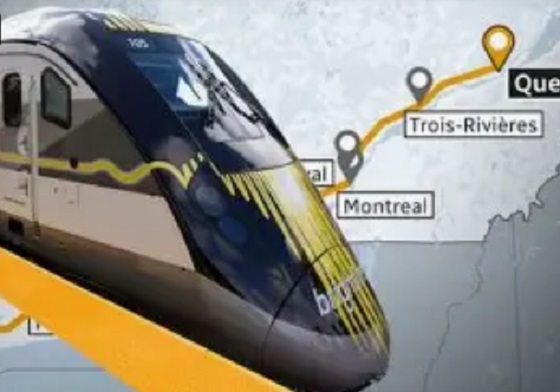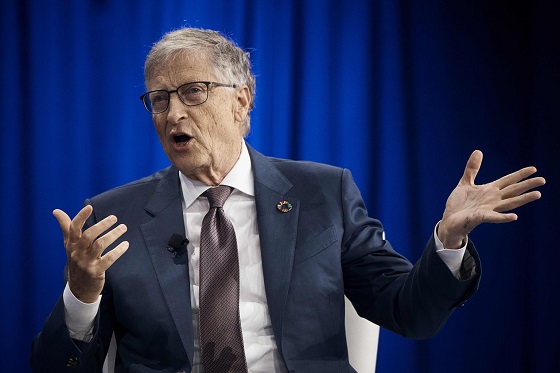Bruce Dowbiggin
Destroying The Development System: Expect Turbulence

News Item: Child golf phenom Xavier Perez has scored a major NIL deal before even becoming a teenager. The 12-year-old, who has won more than 250 tournaments since he began playing golf competitively nine years ago, landed a name, image and likeness deal with Cobra Puma.
NIL, to the uninitiated, means Name Image Likeness. And it’s about to blow up the development models for a number of sports— including hockey. The right of athletes to profit from NIL is the result of decades of legal challenges by “student” athletes in the U.S. who saw coaches, programs and networks get phenomenally rich while they received only a scholarship in return (only one percent of all collegiate student-athletes receive a full ride.)
If an athlete was seen to be receiving even a meal or a job from an outside party they lost their “amateur” status and were ineligible for play in the U.S. college system that supplies talent to the NFL, NBA, NHL and MLB. Ditto if they used an agent. For decades the system prevailed. Until the explosion in the digital world of video games, when greedy colleges reaped a fortune using the NIL of athletes— never thinking they’d need to compensate them.
The result was O’Bannon v NCAA, a challenge to U.S. antitrust law in which former UCLA star Ed O’Bannon and a number of other former NCAA athletes won the right in 2014 to be compensated for their NIL in the EA Sports series. That produced years of negotiations in which the NCAA tried to create a system that would preserve college athletics while staying within the terms of the decision.
On July 1, 2021, the NCAA announced it had agreed to rules that “removed restrictions on college athletes from entering paid endorsements and other sponsorship deals, and from using agents to manage their publicity”. The only caveat is that athletes can’t use the symbols, uniforms or logos of the school in their advertising. And universities can’t pay athletes directly.
What they created is a wide-open system that 12-year-old Xavier Perez is now exploiting. What does it mean? It means that the top prospects headed to the NFL, NBA, NHL and MLB could now be making millions even as they play FBS bowl games, March Madness, the Frozen Four etc. They will be able to make decisions on what school to attend based on financial remuneration as well as opportunity to play. They’ll also be able to make significant money years before they enter college.
Because the remuneration comes from booster groups, outsider sponsors and equipment companies, schools will not have the ultimate control they’ve exercised for over a century. An athlete who has financial security will not be forced to go pro before he/ she is ready or go to a team they don’t want to play for. (Or he/ she can use the new transfer portals to switch schools as they see fit.)
“I definitely would’ve stayed for a fifth year [if there were NIL laws],” said Cardale Jones, a former star quarterback at Ohio State. “With my draft status, and still having a household name in college football in Columbus, [Ohio,] I’m pretty sure I would’ve made a lot more money than being drafted in the fourth round.”
NIL is not a panacea for all athletes. Even at the top schools opportunities will be limited for low-profile players in the non-glamour positions. There will conceivably be millionaire QBs playing with OL grunts who might have a deal with a sandwich shop. Smaller schools will have trouble competing with the big boys of Div One.
ESPN reported on what Georgia Tech players received for becoming social influencers. “Swanky PJs are part of what Yellow Jackets players received in exchange for agreeing to promote TiVo on social media this month. They also got a prepaid debit card worth $404 (Atlanta’s area code is 404) and the company’s 4k streaming device… the total value is more than $100,000, according to TiVo, who said 90 of the team’s players have signed a contract for the endorsement.”
The system is only now being implemented; dramatic changes will doubtless appear. Already there is tension among the coaches who must now deal with the new rules. Alabama’s football legend Nick Sabin and Texas A&M’s Jimbo Fisher recently got into a heated public bitch slapping over the ethics and inducements of recruiting. “That creates a situation where you can basically buy players,” said Saban, who makes about $10 million a year. “You can do it in recruiting. I mean, if that’s what we want college football to be, I don’t know.”

Prize recruit Bryce Young, who had yet to start a game for Saban at Alabama, had NIL deals closing in on $1 million. Clearly, football and basketball will need to streamline their development system. If colleges are now a pay-for-play system, how does that affect their status as institutions of learning? What happens if excesses in NIL force government into stripping colleges of the development role and giving it to pro leagues?
There has been zero information on how NIL affects the development system of NHL prospects? At the moment a majority of them go to Canada’s low-paying CHL teams which play far more games a season than does the NCAA. One game in CHL disqualified a prospect from playing in the NCAA’s formerly simon-pure amateur system.

But now a Connor McDavid can sign an NIL contract at 14 years old, play in the NCAA and— rich already— still be drafted No. 1 overall. Yes, college hockey has a lower profile and fewer opportunities for endorsements. Some will want the CHL’s experience. But a McDavid-type player would be a prize catch for an equipment company or a video game manufacturer. Or even as an influencer. All things currently not allowed in the CHL.
NIL won’t kill the CHL but it could strip away a significant portion of its stars who choose guaranteed money over long bus rides and billeting with other players. It’s early days, of course, but be prepared for an NHL No. 1 draft pick being a millionaire before his name is even called in the draft.
Bruce Dowbiggin @dowbboy is the editor of Not The Public Broadcaster (http://www.notthepublicbroadcaster.com). The best-selling author was nominated for the BBN Business Book award of 2020 for Personal Account with Tony Comper. A two-time winner of the Gemini Award as Canada’s top television sports broadcaster, he’s also a regular contributor to Sirius XM Canada Talks Ch. 167. His new book with his son Evan Inexact Science: The Six Most Compelling Draft Years In NHL History is now available on http://brucedowbigginbooks.ca/book-personalaccount.aspx
Bruce Dowbiggin
Carney Hears A Who: Here Comes The Grinch

It’s a big day for the Who’s of Whoville. Mayor Augustus Maywho is now polling at 62 percent approval. Cindy Lou Who and Martha May Whovier can barely contain their trans-loving heart that finally the Pierre The Grinch is done.
Okay it’s not WhoVille. It’s Canada and it is leader Mark Carney who’s zooming in the polls against Pierre Poilievre. But it might as well be the real nation that Carney commands today. As 2025 comes to a conclusion Donald Trump seems the least of Whoville’s perils. For example:
The NDP government in B.C. has now declared that future legislation must be interpreted through the lens of the United Nations Declaration on the Rights of Indigenous Peoples. According to Chief Bent Knee (David Eby) this means that the province cannot act independently of the progressive diktats of Sudan, Nepal, Moldova and other international titans. Having been informed of Canada’s “genocidal” behaviour by Trudeau in the Rez Graves pantomime, the UN folk will no doubt look on Canadians as worthy of punishment.
The UNDRIP menace has been around since the days when Skippy Trudeau was wielding the mace in Parliament. On June 20, 2021 the federal government passed UNDRIP into law by a vote of 210 to 118. (The Liberals, NDP and Bloc all voted in favour.) The only party that opposed it were the Conservatives. In defence of those hapless boobs none of them voting yes ever expected a province to align itself with such legislation. That’s the Canadian way. Act on conscience. Retract on self preservation.

But on the heels of Eby’s unopposed capitulation to B.C.’s many “peoples” in recent land settlements, ones that threaten the legal right to properties of home owners, the wholesale framework for governing the province now will be determined by appeal to the UN.
The Carney crew — who act as though Canada’s indigenous communities are now equal partners in Confederation— assure Canadians that judicious lawyering by government savants has everything under control, but anyone trusting the Liberals after the past decade is in need of counselling.
The B.C. conundrum plays into another of the challenges (read: disasters) faced in B.C. by the Elbows Up brigade. Namely the much-heralded memorandum of understanding on energy policy between the feds and Alberta. Canadians were assured by Ottawa that this federal government sees pipelines as a priority, and getting Alberta’s product to tidewater as an urgent infrastructure need. Carney described the MOU as if it were a love-letter to the restless West. How is he going to get pipelines through to the B.C. coast when Eby and the indigenous said it was a no-go? Trust us, said Carney.

Before you could say Wetaskiwin dark clouds gathered on the deal. Smith took it in the ear from Alberta separatists for compromising anything to the feds. Carney, meanwhile, ran into the predictable roadblock from B.C. Eby talked of maybe allowing pipelines in the future, but the ban on shipping off the province’s shoreline was verboten.
To test the resilience of the MOU the federal Conservatives (remember them?) put forward a motion to build the pipeline from Alberta to the B.C. coast. Even though the motion used the same language of the MOU between Danielle Smith and Mark Carney, the Liberals and their hand maidens defeated the motion. Carney himself abstained because, hey look at that shiny object.
Immediately the Trudeaupian Deflection Shield was employed. Here’s Liberal Indigenous Service minister and proud Cree operative Mandy Gull Masty “Today’s motion that’s being put on the floor is not a no vote for the MOU. It’s a no vote against the Conservatives playing games and creating optics and wasting parliamentary time when they should be voting on things that are way more important.”
Robert Fife, the highly rated G&M scribbler who just won some big award, led the media pack, “Conservatives persist with cute legislative tricks, while the government tries to run a country.” Run a country? Into the ground?
Let’s not forget the $1.5 billion bloviators at CBC. They, too, say the vote is a big loss for the Tories. “It risks putting them offside, what is a very top priority and frankly, was considered a big win for Alberta Premier Danielle Smith.’” said Janyce McGregor. Here’s Martin Patriquin on one of the Ceeb’s endless panels. “It’s embarrassing, man. I don’t see any sort of political advantage to what happened today.”
Embarrassing? The Libs have committed to re-building gas pipelines in Ukraine, even as they stall on developing pipelines in Canada. Luckily CBC washrooms have no mirrors. And there’s always Donald Trump to deflect from the pantomimes of Canadians Laurentian debating club.
Here, CTV hair-and-teeth Scott Reid is nursing a Reuters poll that has Trump’s approval at historic lows of 36 percent. Reuters is a firm that predicted Kamala winning the presidency. Until she didn’t on Nov.4. Meanwhile Rasmussen, which correctly had Trump ahead the entire campaign, has his current approval at 44 percent while the RCP average is 43.9.
But corrupt data to make Trump seem odious is no sin in WhoVille Ottawa. Keep feeding the Karens bad data. At least Canadians have their beloved healthcare to fall back on. Or maybe their beloved MAID. A Saskatchewan woman suffering from parathyroid disease has revealed that she is considering assisted suicide, because she cannot get the surgery she needs.
“Jolene Van Alstine, from Saskatchewan, has extreme bone pain, nausea and vomiting. She requires surgery to remove a remaining parathyroid, but no surgeons in the province are able to perform the operation. In order to be referred to another province for the operation, Van Alstine must first be seen by an endocrinologist, yet no Saskatchewan endocrinologists are currently accepting new patients.
The pain has become so unbearable that she has been approved for Canada’s euthanasia and assisted suicide program, with the ending of her life scheduled to take place on 7 January 2026.”
Well. Happy New Year, Canada. May no one offer you MAID in the next twelve months.
Bruce Dowbiggin @dowbboy is the editor of Not The Public Broadcaster A two-time winner of the Gemini Award as Canada’s top television sports broadcaster, his new book Deal With It: The Trades That Stunned The NHL And Changed hockey is now available on Amazon. Inexact Science: The Six Most Compelling Draft Years In NHL History, his previous book with his son Evan, was voted the seventh-best professional hockey book of all time by bookauthority.org . His 2004 book Money Players was voted sixth best on the same list, and is available via brucedowbigginbooks.ca.
Bruce Dowbiggin
Wayne Gretzky’s Terrible, Awful Week.. And Soccer/ Football.

Inquiring minds want to know: Why did FIFA (Federation of International Fraud Artists) award American president Donald Trump a new “Peace Prize” at the Washington D.C. draw for the June/ July tournament? The usual suspects are paralyzed with rage. Everyone else is laughing at the kabuki theatre stunt.
The short answer is that if you were FIFA and you were receiving a reported billion or more dollars from the U.S. and the Canadian/ Mexican cities hosting the 48-team tournament you’d give the host more than a bottle of wine and flowers as a thank-you. Thus the ugly statue and the Boy Scout medal. The obsequious awarding of the prize and match medal were proportionate to the greed of FIFA in extorting the cash.
(America’s fainting goat media immediately complained about unearned awards for little virtue, forgetting as usual that the Nobel folks gave Barack Obama a Peace Prize after nine months in the White House for simply being a black man.)
Trump getting a peace award from FIFA, the most corrupt sports body in the sports world, is mint, however. You can’t write this stuff. (They should give it to him on a speed boat heading across the Caribbean.) The Donald then playfully suggested that Americans leave the name football to the soccer folks because, you know… feet and a ball. More outrage from NFL fans.
So what was the gift for the two Canadian cities hosting games who have also coughed up plenty? Toronto says its estimated budget is $380 million for six games/ B.C. tax payers are obliged to cough up an estimated $580 million for Vancouver’s five games). For cities with, how shall we say, bigger fish to fry.
Sadly all they got was a little farce in which a delighted PM Mark Carney was allowed to Canada as the first ball to start the picking, evidently unaware that all the balls he had to select from also said Canada. Carney’s joy was tempered when he saw Mexican president Claudia Sheinbaum draw a ball that said “Mexico” while Trump— in on the fix— got one entitled “United States”.

In a final attempt to curry favour with the fleeced nations FIFA boss Gianni Infantino gathered the world leaders for a painful onstage selfie, marking the first time Trump and Sheinbaum had ever met in the (orangey) flesh. Call it National Lampoon’s Soccer Vacation.
Having exhausted itself with the peace prize falderol FIFA evidently forgot to put any more thought into the rest of the 55-minute run-up to the draw. While soccer/ footie fans around the world ground their teeth in impatience the organizers presented a combination Eurovision/ People’s choice Awards ordeal of failed cues, untranslated interviews (the Spanish translator showed up about 30 minutes late) and pregnant pauses.
Host Heidi Klum’s stunning gold dress nearly made up for her wooden repartee with comedian Kevin Hart (“not sure why I’m here”) and co-host Rio Ferdinand, former star English defender who, alas, never won the WC. But that was all an appetizer for the real low point, the introduction of global brand stars to pick the draw. NFL legend Tom Brady, NBA legend Shaquille O’Neal and NHL… er, player Wayne Gretzky.
Their task, hectored by the hosts, was to draw a ball, unscrew the thing, withdraw a nation’s name and so on. While there may have been some tension in the audience there was no appreciation of that on the screen as more clunking dialogue and curious pronunciations (Ferdinand kept referring to Group “Haitch”) landed dead on the floor.
The nadir of the ceremony—indeed of his career— was Gretzky’s contribution. Brady and O’Neal had managed to survive their task of unscrewing the ball and pronouncing a name, but Gretzky was brought low by the stage business of the balls and the nations he was forced to announce.

The clearly flustered Gretz (he insisted he’d practiced all morning) wrestled manfully with the balls. Finally the producers went with a long shot of him fumbling in the dark. Then he topped that. Gretzy apparently thinks there are countries called “North Mack-a-donia” and “Cur-ack-ow.” Other stabs at geography were almost as tortured.
Bitter Canadians could put up with him sucking up to Trump (he was mentioned as being in the crowd at the DC Xmas tree lighting) but failing geography is unforgivable. The week that started with Gretzky in a photo golfing at POTUS’s Jupiter, Florida, golf course was ending with him pummelled for his abuse of nations with different-sounding names. The Wayne Gretzky Center For Kids Who Want To Talk Good.
The moral: Never send a centre to do a netminder’s job. Makes you understand why Bobby Orr has laid low since his Trump endorsement came out.
With that bracing date with immortality disposed of the draw proceeded. We had been pounded for an hour about how great the tournament was, and finally footy fans got what they wanted. As a host Canada got a bye into the field. Their reward is playing the tenacious Swiss and, gulp, probably Italy, which is forced to qualify after playing with their food for too long. (Insert your Stanley Tucci joke.)
If not Italy then one of Wales, Bosnia and Herzegovina or Northern Ireland. Oh, right Qatar is in there too as fodder. Been nice knowing you, Canada. The Americans somehow drew a creme puff quartet of Australia, Paraguay and Slovakia, Kosovo, Turkey or Romania. Money can’t buy you love, but it can get you a warm hug from FIFA.
In the end it’ll be one of Brazil, Argentina, Germany or France for the final in the NJ Meadowlands on July 19. Maybe they’ll have a spelling bee at halftime. Or maybe they’ll bring back Trump for the final game to give him another peace prize. Just don’t ask Gretzky to announce Lothar Matthaus, Bruno Guimaräes or Gabriel Magalhäes.
Bruce Dowbiggin @dowbboy is the editor of Not The Public Broadcaster A two-time winner of the Gemini Award as Canada’s top television sports broadcaster, his new book Deal With It: The Trades That Stunned The NHL And Changed hockey is now available on Amazon. Inexact Science: The Six Most Compelling Draft Years In NHL History, his previous book with his son Evan, was voted the seventh-best professional hockey book of all time by bookauthority.org . His 2004 book Money Players was voted sixth best on the same list, and is available via brucedowbigginbooks.ca.
-

 Alberta1 day ago
Alberta1 day agoThe Recall Trap: 21 Alberta MLA’s face recall petitions
-

 illegal immigration1 day ago
illegal immigration1 day agoUS Notes 2.5 million illegals out and counting
-

 International1 day ago
International1 day agoTyler Robinson shows no remorse in first court appearance for Kirk assassination
-

 Business2 days ago
Business2 days agoHigh-speed rail between Toronto and Quebec City a costly boondoggle for Canadian taxpayers
-

 Business2 days ago
Business2 days agoThe world is no longer buying a transition to “something else” without defining what that is
-

 Energy2 days ago
Energy2 days agoCanada’s future prosperity runs through the northwest coast
-

 Daily Caller21 hours ago
Daily Caller21 hours ago‘There Will Be Very Serious Retaliation’: Two American Servicemen, Interpreter Killed In Syrian Attack
-

 illegal immigration2 days ago
illegal immigration2 days agoEXCLUSIVE: Canadian groups, First Nation police support stronger border security









